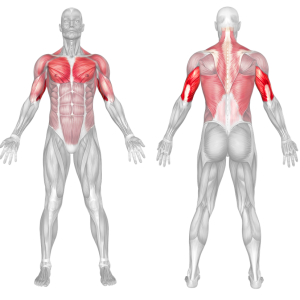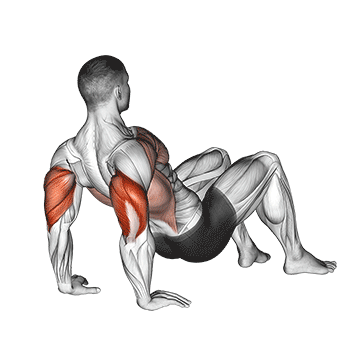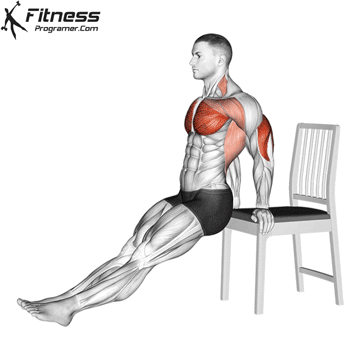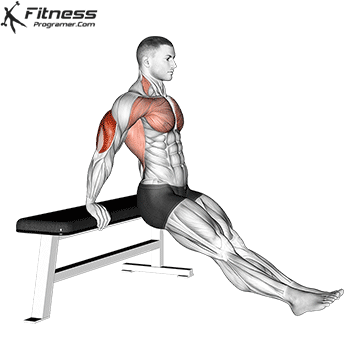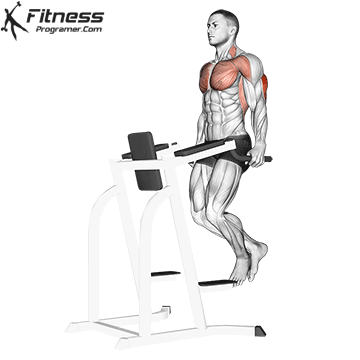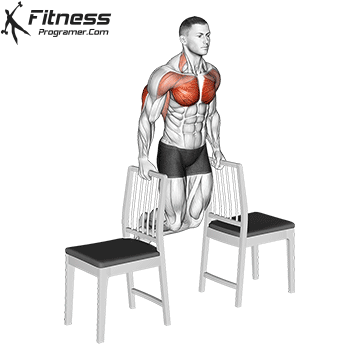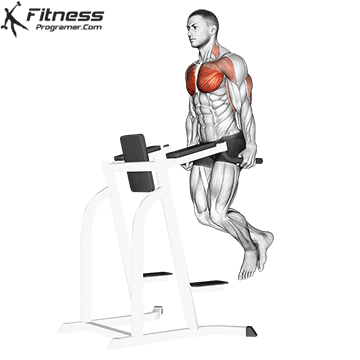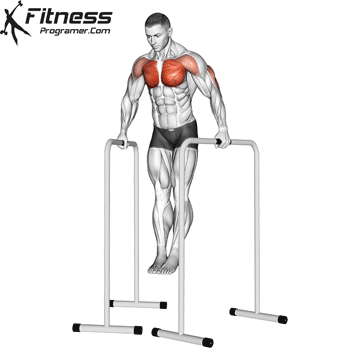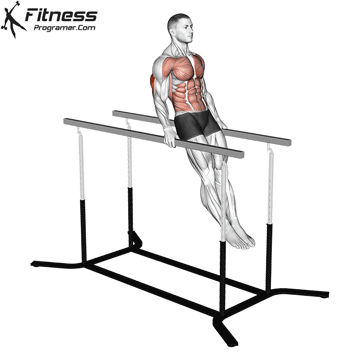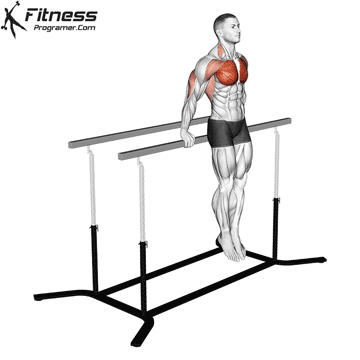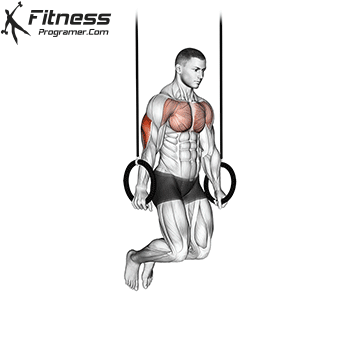Overview
The assisted triceps dips machine is an excellent exercise for building triceps strength, especially for beginners or those working on improving bodyweight dips. It provides controlled resistance, allowing users to develop proper form and strength before progressing to unassisted dips.
This exercise is highly effective for triceps activation, but it also engages the chest and shoulders, making it a great compound movement for upper body development.
How to Perform Assisted Triceps Dips
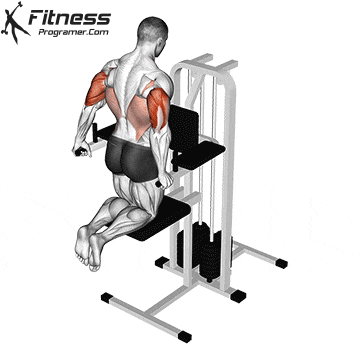
Step 1: Set Up the Machine
Adjust the assistance weight on the machine. The heavier the assistance, the easier the exercise.
Step onto the platform and grab the parallel dip bars with a neutral grip (palms facing inward).
Position your knees or feet on the pad, depending on the machine’s design.
Step 2: Starting Position
Maintain an upright posture with your chest up and core engaged.
Grip the bars firmly with your arms fully extended.
Keep your elbows close to your body to target the triceps effectively.
Step 3: Lowering Phase
Slowly lower your body by bending your elbows while keeping them tucked in.
Descend until your upper arms are parallel to the ground or slightly below.
Keep your shoulders stable and avoid shrugging.
Step 4: Pressing Phase
Push through your palms to extend your arms, bringing your body back to the starting position.
Focus on engaging your triceps during the upward movement.
Avoid locking out your elbows at the top to maintain muscle tension.
Step 5: Repeat for Desired Reps
Perform 3 to 4 sets of 8 to 15 reps, adjusting assistance as needed.
Tips for Proper Form
Keep your elbows tucked to emphasize triceps activation.
Maintain a controlled movement to prevent swinging.
Engage your core for stability throughout the exercise.
Use an appropriate assistance level to ensure proper technique.
Avoid excessive forward lean, which shifts focus to the chest.
Common Mistakes to Avoid
Using too little assistance, leading to poor form and strain.
Flaring the elbows, which reduces triceps engagement.
Relying on momentum, rather than controlled movement.
Dropping too fast, increasing the risk of injury.
Locking the elbows at the top, which reduces time under tension.
Benefits of the Assisted Triceps Dips Machine
1. Beginner-Friendly Strength Progression
This machine allows beginners to develop strength before attempting full bodyweight dips.
2. Reduces Strain on Joints
The assistance mechanism decreases joint stress, making dips more accessible for individuals with shoulder or elbow discomfort.
3. Enhances Triceps Development
This exercise effectively targets the triceps brachii, helping build stronger and more defined arms.
4. Improves Upper Body Strength
By engaging the chest, shoulders, and core, assisted dips contribute to overall upper body power.
5. Encourages Proper Technique
Using assistance ensures that users develop correct form, reducing the risk of injury and muscle imbalances.
How to Incorporate Into Your Routine
As a Strength Progression: Perform 3 to 4 sets of 10 to 12 reps before transitioning to unassisted dips.
In a Push Day Workout: Pair it with bench press, overhead triceps extensions, and push-ups.
For Muscle Endurance: Use higher reps (12 to 15) with moderate assistance to build stamina.
For Advanced Lifters: Reduce assistance gradually to increase difficulty.
Assisted Triceps Dips Muscles Worked
